Apollo
15
Apollo 15 was the ninth manned mission in the United States' Apollo program, the fourth to land on the Moon, and the eighth successful manned mission. It was the first of what were termed "J missions," long stays on the Moon, with a greater focus on science than had been possible on previous missions. It was also the first mission on which the Lunar Roving Vehicle was used.
The mission began on July 26, 1971, and ended on August 7. At the time, NASA called it the most successful manned flight ever
achieved.
Commander David Scott and Lunar Module Pilot James Irwin spent three days on the Moon, including 18½ hours outside the spacecraft on lunar extra-vehicular activity.
The mission was the first not to land in a lunar mare, instead landing near Hadley rille, in an area of the Mare Imbrium called Palus Putredinus (Marsh of Decay). The crew explored the area using the first lunar rover, which allowed them to travel much farther from the Lunar Module
lander than had been possible on missions without the rover.
They collected 77 kilograms (170 lb) of lunar surface material. At the same time, Command Module Pilot Alfred Worden orbited the Moon, using a Scientific Instrument Module
in the Service Module to study the lunar surface and environment in great detail with a panoramic camera, a gamma-ray spectrometer, a mapping camera, a laser altimeter, a mass spectrometer, and a lunar sub-satellite deployed at the end of Apollo 15's stay in lunar orbit
( an Apollo program first ). |
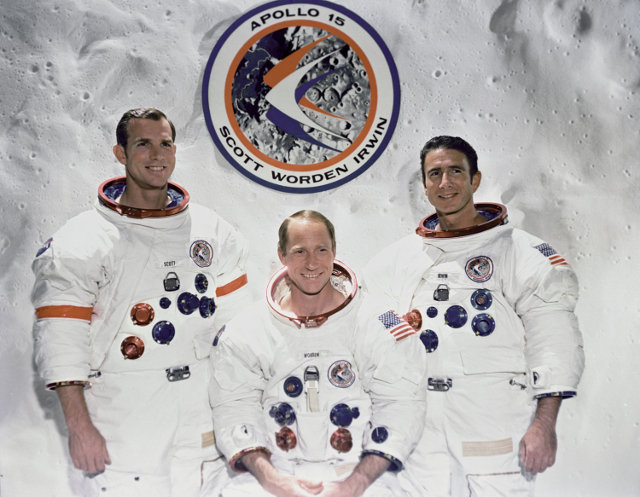
David Scott,
Alfred Worden, James Irwin
Picture credit
NASA |
Although the mission accomplished its objectives, this success was somewhat overshadowed by negative publicity that accompanied public awareness of postage stamps carried without authorization by the astronauts, who had made plans to sell them upon their
return.
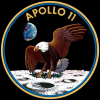 |
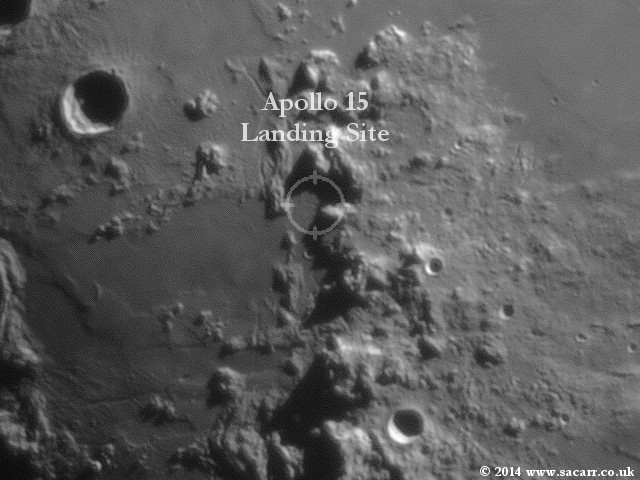
This updated
image was
taken in February 2014, with a ZWO ASI120MM camera, using a x2 barlow
and an IR Pass filter. Strong shadows are cast across the landing
site area, although Hadley Rille can be seen in the centre of the
target, and it was where this Rille meets the shadow where Apollo
15 landed.
The two small
craters in the upper right plain are 2 miles diameter.
The large
crater to the upper left of the image is Autolycus, a 24 mile
diameter crater. Just below the target is Hadley C, a 4 mile crater.
Position -
Long 3.6 deg East, Lat 26.0 deg North
Area - Montes Apenninus area
The picture
below is a close up image from the Virtual
Moon software, a valuable aid in this project. Hadley C above,
can be seen next to the erosion channel in the picture below.
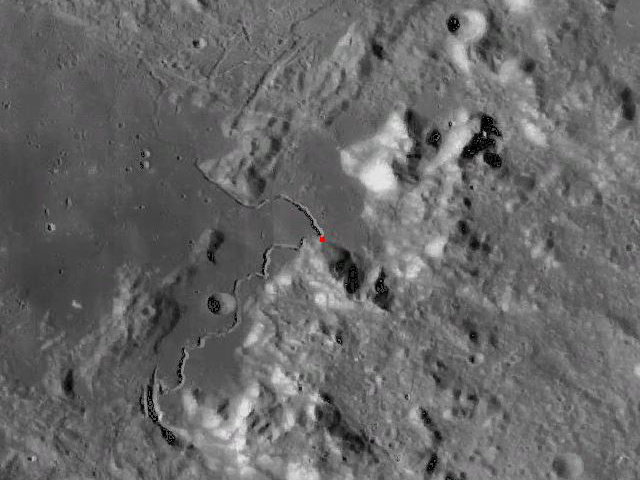
|
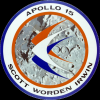 |
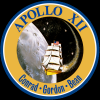 |
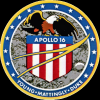 |
 |
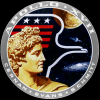 |
|
Image
from Apollo 15, taken by Commander David Scott at the end of
EVA-1. Lunar Module Pilot Jim Irwin is seen with the Lunar Roving
Vehicle, with Mount Hadley in the background.
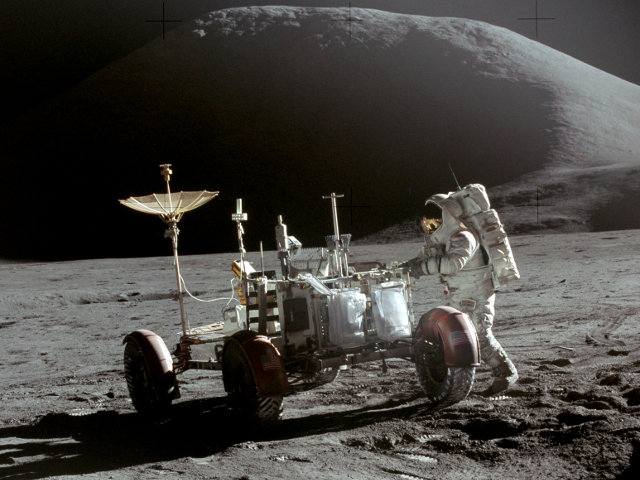
Picture credit
NASA
|
|
|
|
|
|
Text about the
missions via Wikipedia
Extreme close up
images via Virtual
Moon Atlas
|









